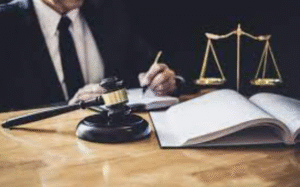[This post gives an overview of the #ABATECHSHOW 2023 presentation Accessibility in Legal Tech by attorneys Haley Moss and Lisa Mueller, based on a summary by ChatGPT as edited by Carolyn Elefant]
Disability Definitions
The speakers opened the session with some foundational definitions:
Disability – According to the Americans with Disabilities Act of 1990:
A physical or mental impairment which substantially limits a major life activity. Major life activities are functions important to most people’s daily lives, which can include concentrating, communicating, reading, and moving.
Neurodiversity – A concept where neurological differences are to be recognized and respected as any other human variation Neurodivergent individuals include those with Autism, ADHD, learning disabilities, Tourette Syndrome, intellectual disabilities, psychiatric disabilities, and acquired cognitive disabilities.
It was noted only 1.22% of lawyers self-identify as people with disabilities and speculated that they may be reluctant to do so out of concerns for bias and stigma.
How Legal Tech Can Be More Accessible
After providing this backdrop, the speakers went on to discuss that legal tech must focus on understandability, fairness, and inclusion. Legal tech should promote global accessibility standards, provide resources for individuals with disabilities, and prioritize accessibility and usability. Further, legal tech should give staff the training and tools they need to support clients with disabilities. Accessible solutions should be considered as part of any legal technology development, so that any user, regardless of their disability, can interact with these solutions without facing unnecessary barriers. Above all, access should be a collective responsibility instead of a sole responsibility placed on one or two people.
Universal Design for Usability in Legal Tech
Accessible design for legal tech should follow concepts that prioritize usability for users of all abilities. This means creating tools and platforms with high-contrast colors to make information easier to read, enlarging interactive buttons and textboxes for greater precision, using user-friendly input systems such as text-to-speech and speech-to-text, and providing alternative navigation methods for those needing more assistance. Additionally, allowing for a range of methods for digital input, such as styling for accessibility tags, single-page large readouts, and adjustable font sizes, ensures that users with physical declinations or vision impairments are not locked out of legal spaces. Ultimately, taking extra caution to craft universal legal tech designs will ensure that everyone is given fair access to a platform and its offerings.
Three Principles to Make Legal Tech More Accessible
The three principles to make legal tech more accessible are Plain Language, Readability, and Aesthetics.
Plain language refers to using the most straightforward construction of words to communicate a message – avoiding legalese terms.
Readability is about the structure of the text; the easier the flow, the better.
Finally, aesthetics is about visual tools, such as font choice and size, text color, and other graphical elements, which can be used to increase comprehension and engagement. All of these are essential in making complicated legal information easier to understand.
In conclusion, with attention to these elements, the goal of making legal information more understandable and accessible for those who could benefit from it can be realized.
[Editorial Note – Additional Resources:
DOJ ADA Compliance Guide for Websites (March 2022)
Web Content Accessibility Guidelines
ADA & Title III’s Application to Websites (2022)]











More Stories
Litigation Specialists: Your Legal Champions
Summary Judgment in Favor of General Contractor Under Privette Doctrine Overturned: Lessons Learned | California Construction Law Blog
Summary of CBP’s March 2023 Forced Labor Technical Expo